Newt belly pattern for picture-matching
18 April 2024 3:57pm
19 April 2024 4:14pm
Hi Robin this is a great idea! Have been thinking about approaching the community for quiz questions. Will reach out to Xavier to ask if we can use it or if he wishes to run it on next Wednesdays VH
22 April 2024 11:27am
Thanks, and that's a match!
All these pictures are from a lab experiment and formated with AmphIdent. We took weekly belly pictures of several larvae. The aim of this google form is to validate (by comparing answers with the lab reference image base) picture-matching by human is reliable although the change of pattern can be verry quick at this life stage.
If validated there will be the need to improve existing pattern-matching solutions for in situ observations of larvae, for instance with ML and/or Human Learning (thanks Zooniverse)...
WILDLABS AWARDS 2024 - No-code custom AI for camera trap species classification
5 April 2024 7:00pm
10 April 2024 3:55am
Happy to explain for sure. By Timelapse I mean images taken every 15 minutes, and sometimes the same seals (anywhere from 1 to 70 individuals) were in the image for many consecutive images.
17 April 2024 5:53pm
Got it. We should definitely be able to handle those images. That said, if you're just looking for counts, then I'd recommend running Megadetector which is an object detection model and outputs a bounding box around each animal.
21 April 2024 5:19pm
Hi, this is pretty interesting to me. I plan to fly a drone over wild areas and look for invasive species incursions. So feral hogs are especially bad, but in the Everglades there is a big invasion of huge snakes. In various areas there are big herds of wild horses that will eat themselves out of habitat also, just to name a few examples. Actually the data would probably be useful in looking for invasive weeds, that is not my focus but the government of Canada is thinking about it.
Does your research focus on photos, or can you analyze LIDAR? I don't really know what emitters are available to fly over an area, or which beam type would be best for each animal type. I know that some drones carry a LIDAR besides a camera for example. Maybe a thermal camera would be best to fly at night.
Conservation Tech Career Pathways - what do you want to know?
17 June 2022 1:30pm
8 May 2023 2:43am
Wildlabers,
I have been randomly trying a few things here and there for a career switch. But so far it has been in bits and pieces. Meanwhile, I have started pursuing Masters in AI and ML hoping that might bring some tractions to my career search/ switch.
Meanwhile, I keep at it while being in my current job.
Thanks,
Soumya
20 April 2024 5:36pm
Unfortunately , not yet . Still digging into it in my free time. And trying to setup a camera in my bord feeder for a mini conservation project in my back garden :)
20 April 2024 5:41pm
Hi Soumya ,
Interested to know if you are pursuing distance education in ML while at your current job. I would love to hear more about your journey on course specifics and the platform you use to complete the education, and I would love to hear if you have any recommendations based on your experiences.
Thanks,
Savi
Thoughts on RooBadge?
2 April 2024 2:55pm
5 April 2024 12:31pm
Sound deterrents to prevent collisions with Kangaroos in Australia have been sold for many years. None have been shown to work. Whether the Volkswagen device will be any better waits to be seen. Collision data will have to be collected for a while to see if the VW device has any effect on collision rate.
8 April 2024 12:49am
That is an interesting concept, and it would be great if something out there worked. In the meantime, I will try not to drive at dusk 🦘
At one point, I knew the "sonic" animal guards were the most stolen components of cars. You head in, get groceries, and come out, and they are gone. They weren't on the car long enough for me to confirm that would work
20 April 2024 2:40am
Totally agree.
Inititally sceptical until I saw Helena and Graeme were involved.
MJ
4th International workshop on vocal interactivity in-and-between humans, animals, and robots
19 April 2024 3:03pm
WILDLABS AWARDS 2024 – MothBox
15 April 2024 5:06am
18 April 2024 10:39am
Already an update from @hikinghack:
19 April 2024 12:00pm
Yeah we got it about as bare bones as possible for this level of photo resolution and duration in the field. The main costs right now are:
Pi- $80
Pijuice -$75
Battery - $85
64mp Camera - $60
which lands us at $300 already. But we might be able to eliminate that pijuice and have fewer moving parts, and cut 1/4 of our costs! Compared to something like just a single logitech brio camera that sells for $200 and only gets us like 16mp, we are able to make this thing as cheap as we could figure out! :)

19 April 2024 12:54pm
Gotcha, well I look forward to seeing future iterations and following along with your progress!!
IgotU
29 February 2024 2:12pm
15 March 2024 1:01pm
Fantastic Nigel! Bummer to hear that production has stopped, but glad you are getting their remaining boards! I know where to come when I need some!
Cheers,
Rob
22 March 2024 12:32pm
I have couple of good use cases for this model in a conservation project here in Cambodia however limited by lack of funding. Would be happy chat if you are interested.
19 April 2024 12:27pm
I'll find you some. Just organising all of our stock of these.
Technology Trends that Would Drive Business Innovation in 2024
19 April 2024 9:27am
The rapidly evolving digital landscape and its fusion with business operations has given rise to a new buzzword: Digital Transformation. Therefore, there’s been an urgent imperative for organizations to adopt digital technologies to stay competitive. The link provides insights into technological advancements that organizations should embrace
Variety Hour: What do you want to see?
15 September 2022 12:46pm
17 April 2024 7:53pm
Steph, yes, I gathered as much myself, but I still wanted to put it on the agenda. It links to the bigger problem in nature conservation, and especially funding : all projects are required to be effective and successful, scalable, profitable and so on (not to mention the paper trail that applicants need to produce to prove it ). It makes sense from the donors' perspective, because if a project is not at least one of these, then it is a waste of money an how do they explain that to the public and the donors' donors. On the other hand, the IMHO ( H for honest ) over emphasis on this requirement is counterproductive and it does not fit in the world of tech development.
To start with the latter, as we all know, in the world of tech VC and startups, people are very used to the idea that a tech invention is not successful. I've read that if you haven't had two failed startups behind you, you're a better contender with your next one. 9 Out of 10 will fail and the remaining one will more than make up for the loss, is the idea. This way of looking at projects fits very well in this tech oriented forum.
Then the counter productive part : with a funding climate like that, who is going to take risks with tech development for nature conservation? Seriously, anybody reading this: if you raise your hand, please do get in touch, because I am curious how you look at the issue and how you deal with it. Whereas I do agree that nature conservation as a whole needs to be successful, I don't believe that the sponsors' stress on it for individual projects is successful itself. Nature's degradation has developed so far ( call me a pessimist ), that we need to take risks and find out if ( and hope that ) what works for silicon valley can work for nature.
Kudos for your attempt at the 'Technical difficulties'. I didn't know about it. Maybe we ( but I mean you, of course ;-) can tinker with the formula. Ask people to talk about how they overcame problems in some detail, because then it is a success story again. ( They could earn a badge! ) And if the recording is an issue, then don't record, or work on anonymity with temporary accounts, TOR, voice scramblers and the camera off. Maybe people are willing to write about their failures instead of doing a live presentation. That way, one has absolute control over anonymizing individuals and hiding the project from being identified. Little risk of a slip of the tongue.
18 April 2024 12:57pm
Thanks for your thoughts on the importance of sharing more about failure in our unique sector. You bring up some very valid points @Frank_van_der_Most and I think the perspective of 'learning by doing' is quite essential. I've shared below some stories I've covered from our East Africa community that touch on this and the perspective that has emerged has been on learning from these experiences and developing with more insight to solve conservation challenges more effectively. I hope you will find these interesting and useful.
19 April 2024 8:06am
Hi @Frank_van_der_Most,
great point and I will address this in my little talk next week.
Greetings from Austria,
Robin
Involve our young learners in climate change action.
27 March 2024 3:24pm
5 April 2024 4:01pm
Hi Cathy
I can't help personally but on seeing your post reached out to a contact who's previously been involved in the British Cartographic Society in case they had any ideas. Their advice:
"I would suggest that she becomes a member of British Cartographic Society (£45 or so) and then writes for/becomes an editor. Then, she will be able to apply for a funding budget for travel... as long as she also writes about the conference! It's a bit long winded, but I am sure that just being an Editor would be an advantage to her anyway."
I hope that helps (or that you find an easier way to get to the conference :D ) - good luck!
Here's their website -
6 April 2024 7:50pm
Thank you so much for this!
18 April 2024 11:40pm
I got assistance. super grateful!
Webinar: Bats and Wind Energy
18 April 2024 6:11pm
Catch up with The Variety Hour: April 2024
18 April 2024 2:50pm
Mothbox v3.2 Updates - Solar, HDR, Wifi Hotspots, and More!
18 April 2024 4:58am
Become a WILDLABS group manager!
17 April 2024 7:36pm
Early Warning Systems for Human-Wildlife Conflict, Zoonotic Spillover, and Other Conservation Challenges
17 April 2024 5:43pm
Fauna & Flora: Bridging geospatial data and people together for enhanced conservation management
17 April 2024 11:31am
TagRanger: Redefining animal tracking iwth ad-hoc wireless networks and software-defined technology
17 April 2024 11:22am
Faces, Flukes, Fins and Flanks: How multispecies re-ID models are transforming Wild Me's work
17 April 2024 11:10am
WILDLABS AWARDS 2024 - BumbleBuzz: automatic recognition of bumblebee species and behaviour from their buzzing sounds
12 April 2024 8:37am
12 April 2024 8:41pm
Super great to see that there will be more work on insect ecoacoustics! So prevalent in practically every soundscape, but so often over-looked. Can't wait to follow this project as it develops!
17 April 2024 10:23am
Thanks Carly! I will keep anyone interested in this project posted on this platform. Cheers
Camera Trap storage and analyzing tools
16 April 2024 5:15pm
16 April 2024 7:17pm
I don't have an easy solution or a specific recommendation, but I try to track all the systems that do at least one of those things here:
https://agentmorris.github.io/camera-trap-ml-survey/#camera-trap-systems-using-ml
That's a list of camera trap analysis / data management systems that use AI in some way, but in practice, just about every system available now uses AI in some way, so it's a de facto list of tools you might want to at least browse.
AFAIK there are very few tools that are all of (1) a data management system, (2) an image review platform, and (3) an offline tool. If "no Internet access" still allows for access to a local network (e.g. WiFi within the ranger station), Camelot is a good starting point; it's designed to have an image database running on a local network. TRAPPER has a lot of the same properties, and @ptynecki (who works on TRAPPER) is active here on WILDLABS.
Ease of use is in the eye of the beholder, but I think what you'll find is that any system that has to actually deal with shared storage will require IT expertise to configure, but systems like Camelot and TRAPPER should be very easy to use from the perspective of the typical users who are storing and reviewing images every day.
Let us know what you decide!
17 April 2024 1:55am
Can't beat Dan's list!
I would just add that if you're interested in broader protected area management, platforms like EarthRanger and SMART are amazing, and can integrate with camera-trapping (amongst other) platforms.
Lotek Telemetry Talks Presents: Tagging Owls – Tips & Tricks from the Experts
16 April 2024 8:26pm
EDGE Fellowship 2025-2027
16 April 2024 3:16pm
Starting a Conservation Technology Career with Vainess Laizer
 Esther Githinji
Esther Githinji
16 April 2024 1:34pm
WILDLABS AWARDS 2024 - TimeLord: A low-cost, low-power and low-difficulty timer board to control battery-powered devices
5 April 2024 3:29pm
16 April 2024 9:34am
Thanks @Freaklabs, I think you'll really enjoy getting involved with this too as we're looking for input from makers in the community to get the most from the approach and to capture features and usability ideas from a large number of people.
I've a new modular drop-off tag build using @Rob_Appleby's original SensorDrop board that I think would be great for this project too to see if we can drop different compartments, or do various different timed events with the one TimeLord board.
Most importantly, we have to make it play a MIDI version of the DoctorWho theme song when you arm the device. That has to be the #1 feature if you ask me!
16 April 2024 9:35am
Reminds me that we should look at both terrestrial and marine applications when we get stuck in to the demo builds to make sure we cover use cases
16 April 2024 10:22am
'Most importantly, we have to make it play a MIDI version of the DoctorWho theme song when you arm the device. That has to be the #1 feature if you ask me!'
Seconded!
Are you interested in starting a new group on WILDLABS? Apply to launch one!
15 April 2024 4:33pm
Using the multivariate Hawkes process to study interactions between multiple species from camera trap data
15 April 2024 3:00pm
"We present the multivariate Hawkes process (MHP) and show how it can be used to analyze interactions between several species using camera trap data."
Integrating AI models with camera trap management applications
25 March 2024 7:47pm
9 April 2024 1:37am
Would also add zamba and Zamba Cloud into the list of tools for running AI models (the former being with Python code, the latter being with a GUI). For the reader at home (since I know Dan knows), these are tools for species classification on camera trap videos. We've got pretrained models trained on over 250,00 videos covering 32 African forest species, 11 European species, as well as a blank / nonblank detector.
There is also the ability to train your own models for new species or locations. And we're super excited to extend this custom model training functionality to support camera trap images thanks to our WILDLABS award (more details here).
13 April 2024 4:47am
Thanks Dan for explaining and clarifying, and Ed and all others for contributing. As a somewhat technical person (IT business consultant) with no formal environmental education, but with a passion to understand and protect the environment, this is a topic I've been exploring and struggling with...
There are really skilled technical experts in this community that love to design and improve solutions, but it's not always easy for potential end users to understand and use said solutions without significant learning curves. And often solutions are designed from a technical perspective, and does not always consider end users' level of experience, knowledge and actual on the ground needs. This is not just a problem in the concervation technology space, but overall tech industry.
To clarify this for myself, I would love to see a summary of how conservation tech solutions fit into a camera trap process that include the following areas - and especially which tools fit where:
- Plan/Design: scope, requirements, timeframes, data needs, overall outcome. Also influences the selection of tools to use in the overall process.
- Capture/execute : both hardware (cameras, audio recorders, sensors, etc), and software (managing hardware lifecycle tracking, capturing trail camera data e.g. image file management, etc) solutions
- Process/Analyse: solutions for initial processing/culling, detailed analysis, and anything classification related
- Present/Display: how best to communicate, display and present the data gathered, analysed and classified...
If there is a resource that already do this comparison and sumarization of tools' capabilities please help me find it - otherwise it might be topic to be explored further...
14 April 2024 7:46pm
Saul Greenberg is a great guy! He has made a few very useful videos regarding the Timelapse/Megadetector integration:
and a tutorial:
https://saul.cpsc.ucalgary.ca/timelapse/uploads/Videos/Video-TimelapseImageRecognitionGuide.mp4
Seeking Knowledge/Resources about Soil Monitoring
10 April 2024 9:53pm
12 April 2024 2:32pm
Hi Frida.
We are currently doing soil monitoring for ecological restoration in Australia with an organization called Bush Heritage Australia. It's been ongoing for about four years and it's in collaboration with BHA and also Monash University's soil science department. There's more info about the project here:
14 April 2024 12:21am
Hi! If you wouldn't mind, would we be able to exchange emails and connect? I'd love to have a short discussion and get some feedback regarding my senior project
14 April 2024 1:50pm
Sounds good. Just sent you a private message.
Wildlabs PPWC course
14 April 2024 11:12am




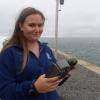






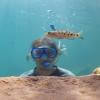
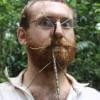
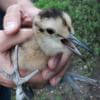








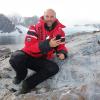





19 April 2024 10:31am